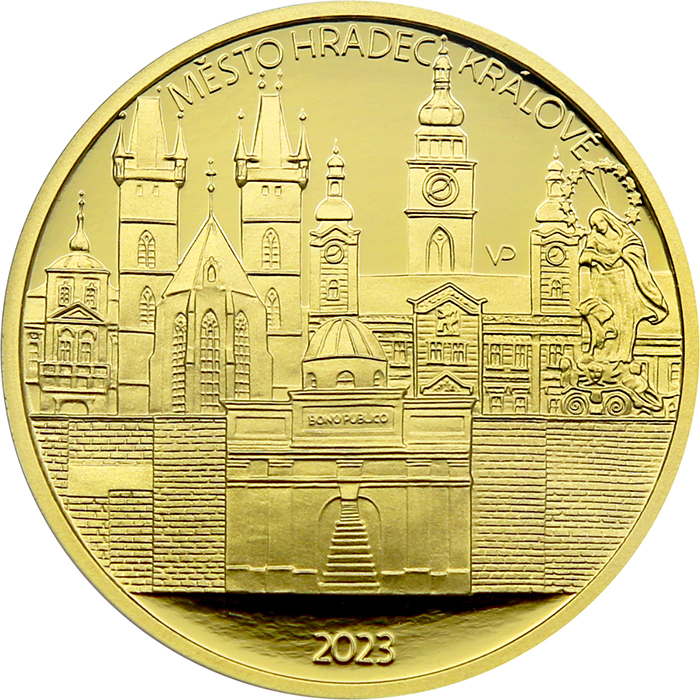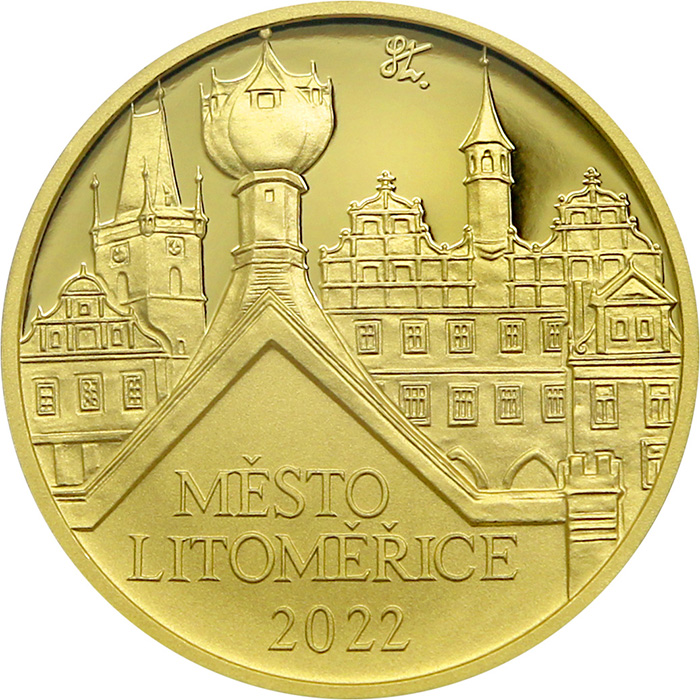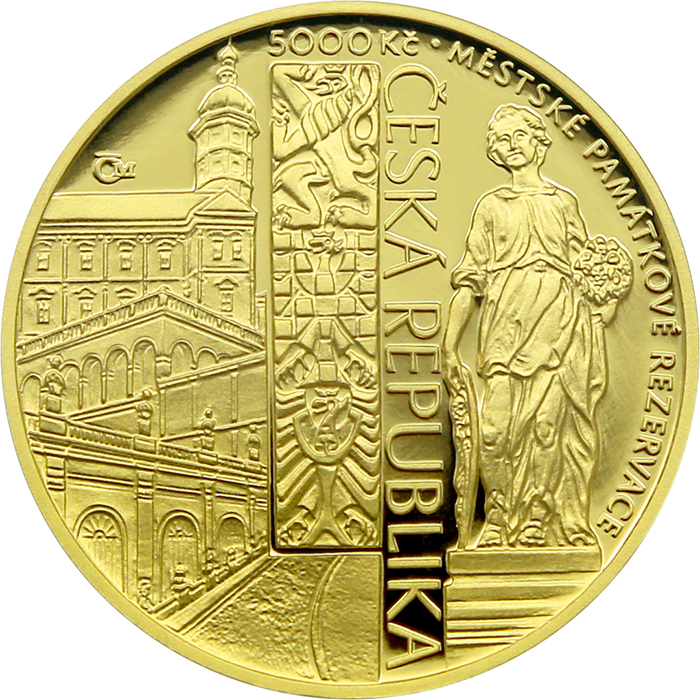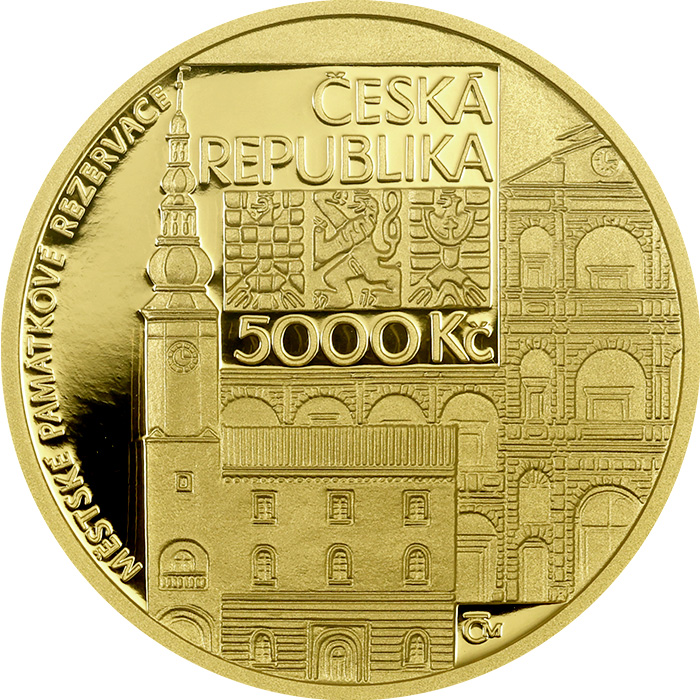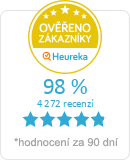Gold Coin 5000 CZK Municipal Monument Reserve Štramberk 2025 Proof
Osvobozené od DPH
Detailed description
1/2 Oz Gold Coin - Štramberk Municipal Monument Reserve
The reverse side of the coin consists of a collage of monuments of the Štramberk Urban Monument Reserve. The Neo-Renaissance fountain in the foreground is complemented by a ground-floor house with a Neo-Baroque gable on the left, the Church of St. John of Nepomuk on the right and the ruins of Štramberk Castle with the Trúba cylindrical tower and a timbered cottage in the background. The description of the coin states the name “CITY OF STRAMBERK” and the year of issue “2025”. The initials of the author Veronika Prokopová, DiS., consisting of a composition of the letters ‘V’ and ‘P’ are placed at the upper left edge of the coin.
On the obverse side, a part of a mural from the interior of Jaroňek's shelter at the Trúba Tower in Štramberk is on the upper part of the coin. The heraldic animals from the great state emblem are shown in the centre - from the left the Moravian eagle, the Czech lion and the Silesian eagle. On the lower side is the face value “5 000 CZK”, the Czech Mint mark “ČM”, the country of origin “CZECH REPUBLIC” and the series name “CITY MONUMENT RESERVATIONS”.
The Štramberk Urban Monument Reserve was declared in 1969. It encompasses the historic core of the town, but above all a collection of 85 Wallachian houses that form a harmonious whole in a display of folk architecture. The historic timbered houses in Štramberk are also unique in that they are still inhabited and part of a living town.
The Moravian town of Štramberk lies in the Nový Jičín district, situated in the steep rocky terrain of Castle Hill, White Mountain and Kotouč. The history of the town dates back to the 2nd half of the 14th century. The founding document shows that on 4 December 1359 Jan Henry of Luxembourg made the sub-castle a town. The privileges granted to the town, such as the mile, warehouse and market rights, were intended to ensure its prosperity.
Most of the town's fortifications survive from the 14th and 15th centuries to serve the new needs of the inhabitants in the following centuries. The castle walls were used as a retaining wall for the attached houses. The Gothic half-cylindrical bastion was converted into a dwelling house. The square Old Tower made of stone and with a wooden gallery on the corner of the fortification was supplemented by a town clock.
The style of timbered wooden houses appeared in Štramberk with the arrival of the Wallachians in the 16th century. The Wallachian shepherds adapted the mountain houses to the limited space of the town and the sloping terrain.
The present houses date largely from the 18th and 19th centuries. Older wooden houses were built from unhewn logs from the Beskydy forests. The joints were filled with moss or rope, secured with wooden wedges and covered with earth. The roofs were covered with thatch and the gables were made up of a rainscreen residence illuminated by a window. Added pavilions provided easy and clean access to the interior of the house. The slope of the ground was levelled by high stone plinths. Stepped courtyards and gardens prevented the slope from sliding during heavy rains.
The inhabitants earned their living by working as labourers or by crafts, which in this region was mainly the trade of tanning. The houses also reflect the status of their owner. The wealthier weavers owned larger and more ostentatious houses, while the weavers occupied smaller and more modest houses.
Among the best preserved locations of folk architecture are the streets V kútě, Zauličí, Kopec, Dolní, Vrchní and Jaroňkova ulička. The most listed wooden houses are located in Horní Bašta and Dolní Bašta streets. These two streets running above each other and up the slope have retained a distinctive character for the settlement of the suburb.
This product is part of the following product sets:
Urban Conservation Reserves SeriesProduct Specifications
Buyback contact form
We will be happy to buy investment metals purchased from us or from our competitors. Our customers always get the highest price offered at any given time. Fill out the form below and we will contact you. Thank you for your trust.





